How to Reverse Homeschool Plan Plus a Free Printable
Reverse homeschool planning is a method of logging your daily school activities for record keeping purposes. The free printable found in this post will help you get started with this practical system.

I don’t know about you, but homeschooling is in full swing again around here. Even though we essentially homeschool year-round (not taking a long summer break), it’s always fun and exciting to “restart” with our new curriculums and plans.
This year, I changed things a lot in our school systems. We transitioned to totally new curriculums, with new lessons plans and schedules. If you’re interested in learning more about that, you can find me over on Youtube sharing all the things homeschooling related.
But in the midst of all these changes, one thing has stayed the same. And that’s my record keeping system. Which is what we’re going to chat about today. And I’m going to set you up with a free printable so you can implement the same system if you choose!
Affiliate disclosure: This post may contain affiliate links. As an Amazon Associate this means I will earn a small commission if you choose to purchase through my links. This is at no extra cost to you! Read full disclosure here.
What is Reverse Homeschool Planning?
So right off, we need to define exactly what reverse planning is. Because honestly, the name makes it seem different than it actually is. So, let’s compare traditional planning to reverse planning.
Traditional Homeschool Planning
In a traditional planning method, you are coming up with a plan to follow day to day in your homeschool. You are planning out what you will do each day, before that day actually starts.
You may plan this out weekly, monthly, or yearly. Or you may even create a schedule with times for each lesson, or you may just have a system you follow every day. This system can be as detailed or as simple as you would like.
The main point is that you are planning ahead of time what you will be doing.
Reverse Homeschool Planning
Reverse planning is different. It’s really not a planning method, but more of a record keeping method. Instead of planning out what you’ll do each day, you are keeping track of what you did.
This system is especially useful for skill-based subjects where you cannot possibly know exactly how the child will progress. Sometimes children need extra time to develop their skill, so planning each lesson out by lesson number isn’t always practical.

Combining the Two Methods
Personally, I create a full homeschool schedule and reverse plan. My schedule helps make sure I plan for all the subjects (history, literature, poetry, nature study, foreign language, etc.). Reverse planning helps me keep track of what we actually accomplish, with details.
To sum it up: the schedule is our ideal day, the reverse planning is what actually takes place.
Without having a simple daily schedule to reference, I tend to forget certain subjects or resources. You can see full details on creating a daily schedule that actually works in this post!
Benefits of Reverse Homeschool Planning
- No more erasing or moving around missed lessons in your homeschool planner.
- No feeling “behind” simply because you’re off track with your pre-planned lessons.
- You won’t waste time making an impossible-to-stick-to, detailed plan.
- You’ll have a record of what your child has accomplished, year after year.
- Have a daily check-in on your progress and accomplishments for accountability.
How to Start Reverse Homeschool Planning
First off, find somewhere to keep your records. This can be a simple lined notebook, a specific homeschool planner, or even a free printable like this one that I offer.
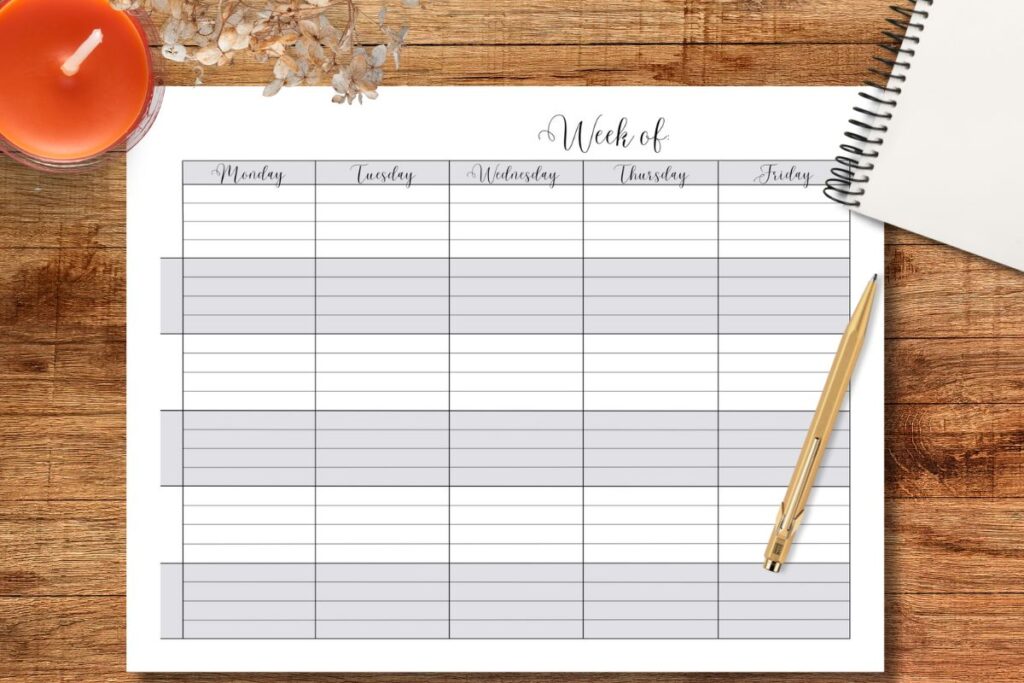
Want the free reverse planning printable? Click here to download!
Of course, you’ll also need to have your curriculum selected and a general idea of how many days per week you want to touch on each subject. This doesn’t have to include chapters or lesson numbers, just a general outline of what you want to work on.
If you would really like to try to complete the entire curriculum book, you can simply divide the number of lessons by the number of days you’ll be doing school. For example, if your math curriculum has 120 lessons and you’re planning on a 36-week school year, you’ll want to try and do math 3-4 times per week.
Beyond this, there’s not much up-front planning that has to be done. You can plan in more detail if you choose, but it’s not necessary.
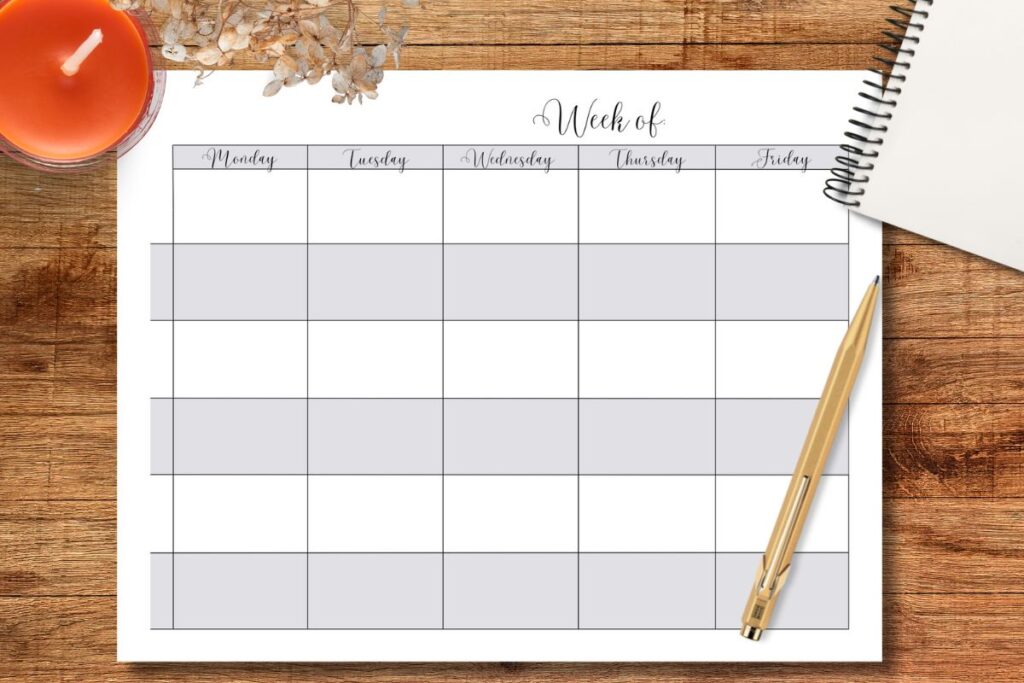
After this, you just do school. That’s right – just start completing lessons, day-by-day, doing what time allows. At the end of that days lessons, record what you completed.
And that’s it! No reworking your entire schedule if someone ends up sick. You just keep working away, little bits at a time, and logging what you accomplish.
Planners Perfect for Reverse Planning
If you’re looking to buy a planner for reverse planning, here are a few options that may work for you!
Mega Homeschool Planner and Organizer: This homeschool planner is inexpensive and perfect for reverse planning with plenty of space each week for writing down what you’ve accomplished. The design is pretty minimalist as well, which is perfect for customizing.
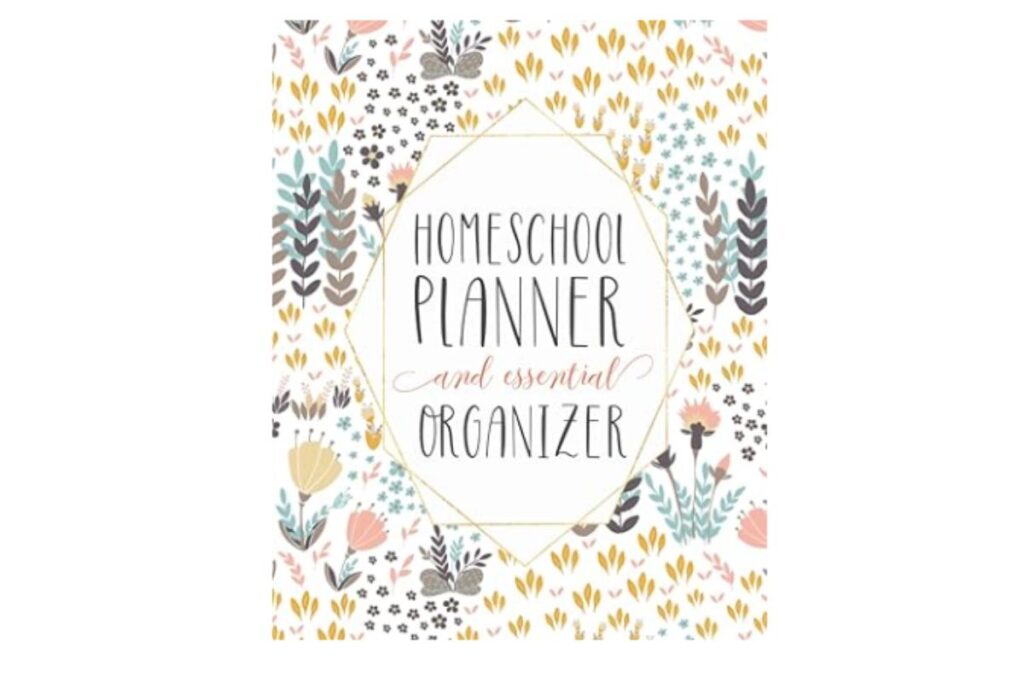
Erin Condren Inspired Planner: This planner is another budget friendly option. I love the spiral binding, which allows it to fold and lay flat. The weekly pages are a blank slate and offer three separate sections for organizing your daily accomplishments, plus there is a note taking section.

Weekly Planning Notebook: This 12-month undated planner can be started any time of the year. It includes 12 sets of monthly calendars, 5 weeks of weekly planning pages for each month, and even monthly brainstorm and reflectiong pages perfect for additional notetaking.
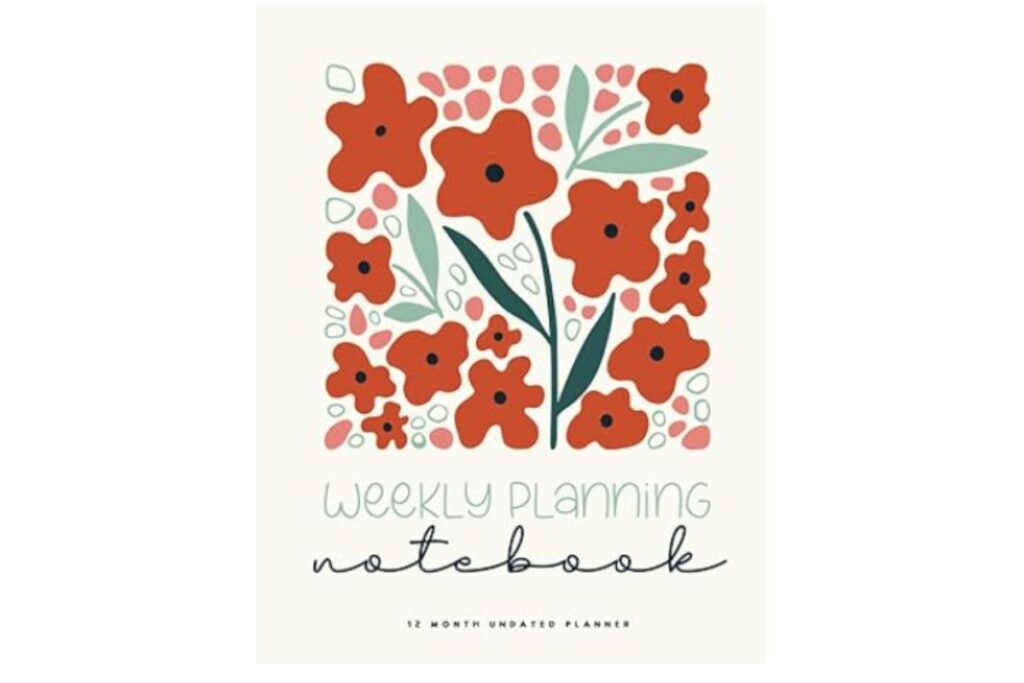
What to Put in Your Reverse Planner
So we’ve determined that reverse planning is essentially more of a record keeping system than a traditional planning system. But what exactly do you need to keep in your records? Well, that’s really up to you, but here are some ideas:
- Books & chapters you read together.
- Learning games you played.
- Individual book readings.
- Lessons from a specific curriculum with lesson numbers.
- Time outdoors exploring nature.
- Science experiments.
- Arts and crafts.
- Cooking lessons, life skills, etc.
And the list goes on and on. Afterall, learning happens every day, in so many different ways. What you choose to log in your planner is really up to you!
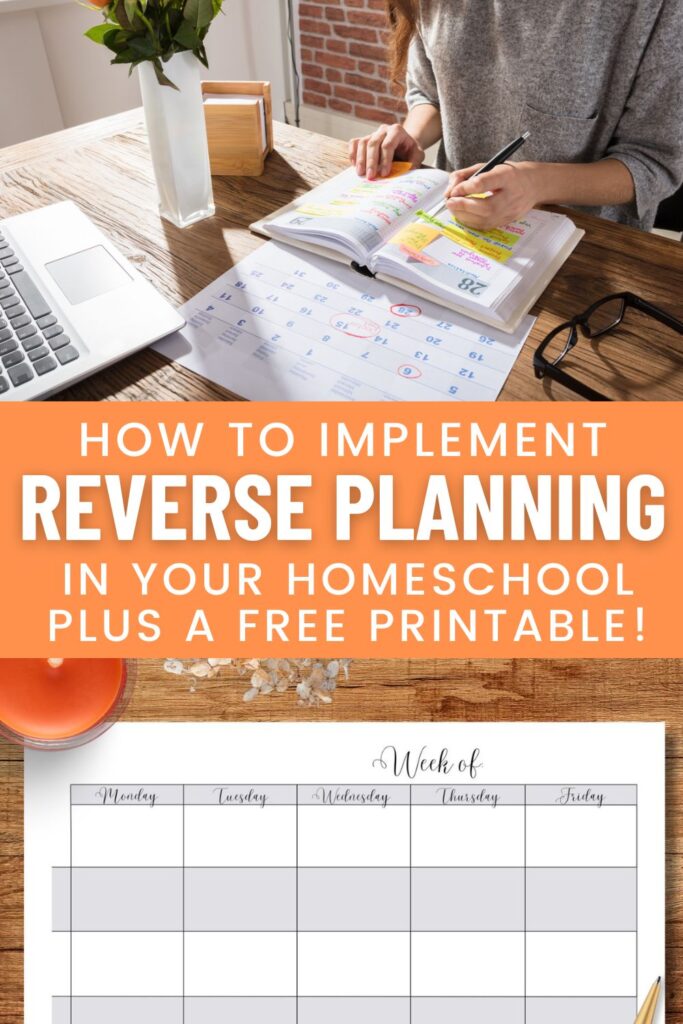
More Free Planning Printables
- Weekly Timetable Printables
- Weekly Scheduling Printable (goes with the printable found in this post)
- Monthly Meal Planning Pages
- Weekly Meal Planner
- Monthly Budget Worksheet
